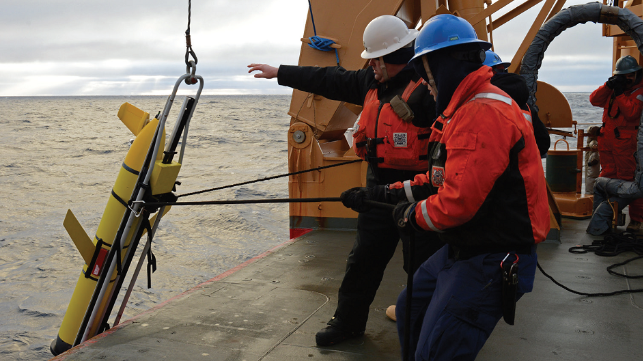U.S. Navy Outlines Strategy for a "Blue Arctic"

The U.S. Navy has released a new strategy blueprint intended to "chart a new course for American naval power" in a rapidly-warming Arctic - a "Blue Arctic," with less ice, more shipping and more competition.
The report notes that melting sea ice is making it easier to operate in the Arctic, leading to more shipping activity and more economic development in the decades to come. The potential benefits are significant - shorter shipping routes, development opportunities for 13 percent of the world's oil and an estimated 30 percent of its undiscovered natural gas, and the continued access to fish stocks that are migrating northwards.
Russia is moving quickly into this space, investing in its Arctic defense capabilities and its economy along the Northern Sea Route. It has implemented new cabotage restrictions along this seaway, the Navy noted, including pilotage and notification requirements that appear to conflict with UNCLOS.
Meanwhile, the government of China has shown a new interest in developing an Arctic presence and opening up the far north for its shipping interests. The Navy expects to sea increased Arctic deployments of the People's Liberation Army Navy (PLA Navy) in the years ahead, including a submarine presence.
To counter rising competition in the region, the Navy plans to rely on its partnerships - particularly with the Coast Guard, the only U.S. entity with year-round icebreaking capability - and on America's allies.
"The United States will always seek peace in the Arctic. History, however, demonstrates that peace comes through strength. In this new era, the Navy-Marine Corps team, steadfast with our joint forces, interagency teammates, allies and partners, will be that strength," the service wrote. "No one nation has the knowledge and resources required to provide security and defense throughout the entire Arctic Region. For that reason, we seek to cooperate with Allies and partners in the Arctic."
It also plans to maintain an enhanced presence in the Arctic, with regular exercises, joint inter-agency operations and "regionally postured naval forces." This will include a mix of permanently-stationed forces, temporary forces, prepositioned equipment and basing infrastructure.
